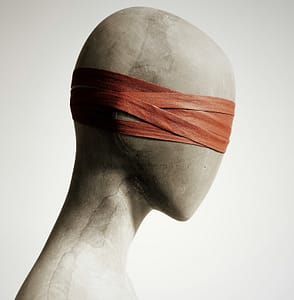
Exploring what blind people “see” is an intriguing journey into the realms of perception, neuroscience, and individual experience. To navigate this complex topic, it’s essential to clarify that blindness encompasses a wide spectrum of experiences, from total lack of vision to varying degrees of partial sight. Additionally, the nature of what is “seen” can significantly differ depending on whether someone is born blind or loses their sight later in life.
The Neuroscience of Seeing Without Sight
At the core of understanding what blind people “see” lies the brain’s remarkable plasticity. For those who are blind, the brain often reorganizes itself to repurpose areas typically devoted to visual processing for other senses, such as hearing or touch. This neuroplasticity suggests that while the visual cortex may not be engaged in processing visual stimuli as it does in sighted individuals, it can still be active and contribute to other forms of sensory perception.
Congenital Blindness versus Acquired Blindness
The experiences of individuals born blind (congenital blindness) and those who become blind (acquired blindness) can differ substantially. People born blind may not have visual memories or the ability to understand visual concepts such as color, brightness, or shadow in the way sighted people do. In contrast, individuals who lose their sight later in life often report visual memories and may experience vivid visual dreams.
Phenomenon of Phosphenes
Some blind individuals report the phenomenon of phosphenes, which are sensations of light produced not by light hitting the retina but by other stimuli, such as pressure or electrical stimulation of the visual system. These can manifest as flickering lights, random patterns, or even more organized shapes, offering a form of “sight” that doesn’t stem from external visual cues.
The Concept of Blind Sight
Another fascinating aspect is the concept of “blind sight,” a condition where individuals who are clinically blind can respond to visual stimuli without consciously seeing them. This suggests that some aspects of visual processing can occur without the visual cortex’s involvement, highlighting the complexity of how we “see” and understand our environment.
Subjective Experiences and Analogies
When discussing what blind people “see,” it’s vital to consider the subjective nature of perception. Many blind individuals describe their perception of the world in terms of non-visual senses, such as touch, sound, and smell, constructing a rich mental image of their surroundings that doesn’t rely on sight. For example, they might “see” a tree by feeling its bark, hearing the rustle of its leaves, and smelling its wood.
Some individuals use analogies to describe their experience of sightlessness, comparing it to seeing nothing but darkness or trying to see through a part of the body that doesn’t have visual capabilities, like the elbow. It’s an attempt to convey the incomprehensibility of sight to those who have never experienced it.
The Role of Imagination and Dreams
For people who have lost their sight, dreams can sometimes serve as a canvas where the visual world continues to exist. These dreams can be vivid and detailed, drawing from the visual memories stored from when they could see. For those born blind, dreams might not include visual elements but are rich in sounds, sensations, and emotions, providing a different but equally complex experience of dreaming.
The question of what blind people “see” opens a window into the profound complexity of human perception. It challenges our understanding of sight as purely a function of the eyes, highlighting instead the incredible adaptability of the brain and the richness of sensory experiences. Blind individuals’ experiences of “seeing” are diverse and nuanced, shaped by a myriad of factors including the cause and onset of blindness, the brain’s plasticity, and the integration of other sensory inputs. Through exploring these experiences, we gain not only insight into the world of blindness but also a deeper appreciation for the multifaceted nature of human perception itself.
